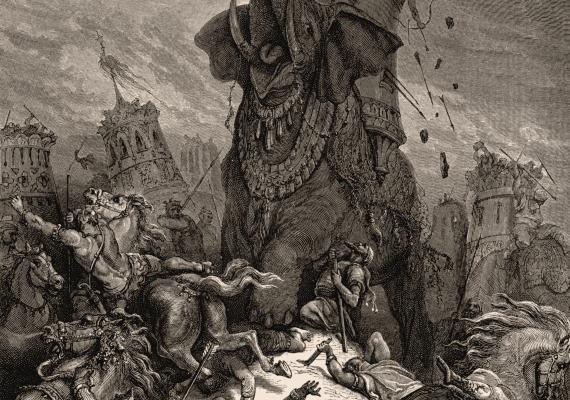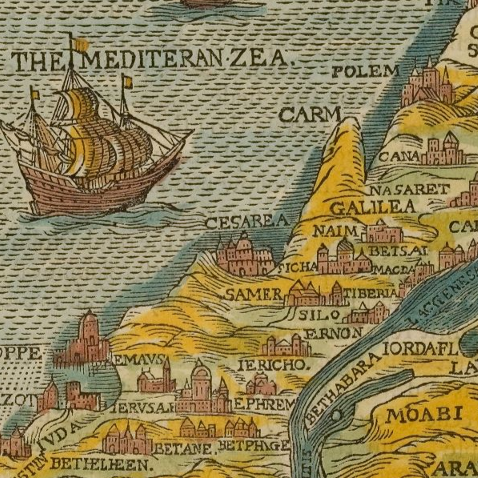Christian Stadel Connects the Dots
How did the Hanukkah story make its way from the Hasmonean era to the Babylonian geonim?

Gustave Doré, Detail: Eleazar Avaran (Maccabeus) Trampled by a War Elephant, Wikimedia Commons.
In the spring issue of JQR (JQR 115.2), Christan Stadel takes a look at the Scroll of Antiochus (aka: Hanukkah Scroll, the Greek Scroll, or the Book or Scroll of the Hasmoneans), which tells the Hanukkah story. This text first appears in Babylonian sources and is preserved in several languages, appearing as part of the holiday liturgy in the geonic Middle Ages and beyond.
The original Aramaic version of the scroll leaves virtually no trace in Palestinian rabbinic sources. On the basis of this, as well as other textual and historical cues, previous scholars, especially Aryeh Kasher, have argued for composition in a Babylonian context, especially in relationship to the Karaite controversies of the eighth and ninth centuries (see Kasher, “The Historical Background of ‘Megillath Antiochus,’” Proceedings of the American Academy for Jewish Research 48 [1981]).
Stadel finds this account of the Scroll’s compositional context convincing, but he revisits the question of the Scroll’s prehistory based on his observation that several historical details present in it suggest that some layer of its source materials must date back to a time nearly contemporary with the events it describes. These historical details are not found in rabbinic sources but do exist in near parallels from the two books of Maccabees and Josephus. Others who have noticed these parallels have opined that the geonim had access to these sources in Greek, but Stadel finds this unlikely given the paucity of evidence that Babylonian rabbis knew Greek. We have increasing evidence in general, however, for the movement of materials from Greek into Aramaic by means of Syriac (and Syriac Christianity), and Stadel, adding to what we know, builds a case for the transmission of 1 Maccabees in a Syriac translation.
This short, learned note fills a missing piece in our knowledge of the circulation of ideas in the rabbinic world.
Read Christian Stadel’s Probing the Sources of the Scroll of Antiochus: The Case for the Syriac Version of 1 Maccabees here.



